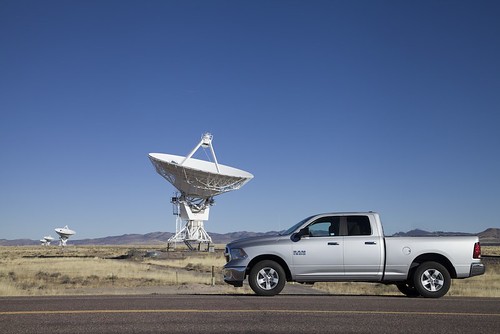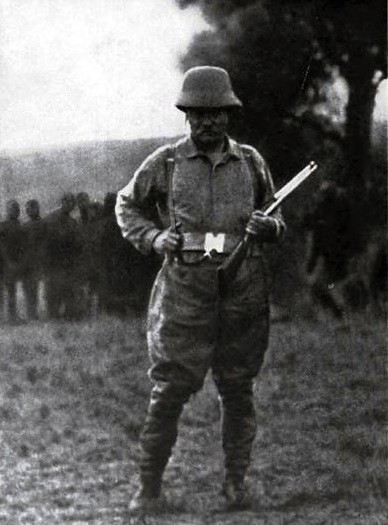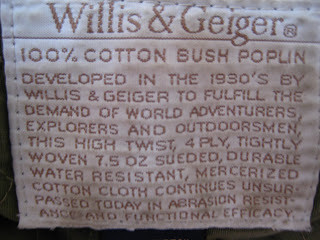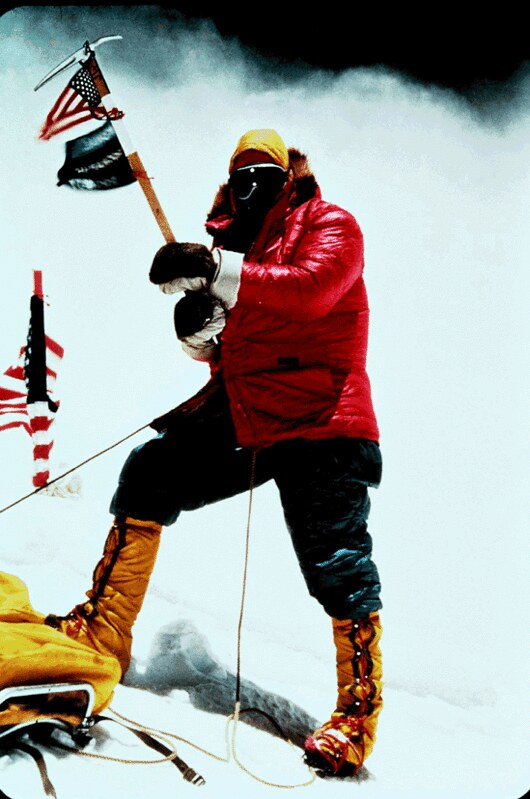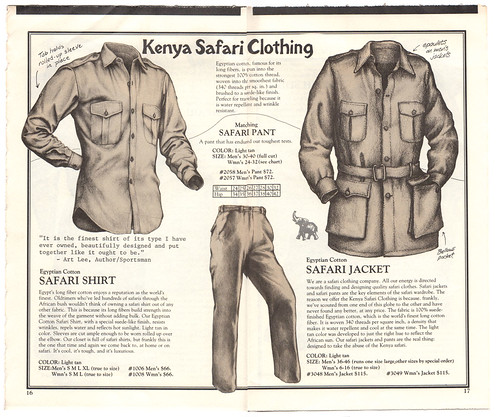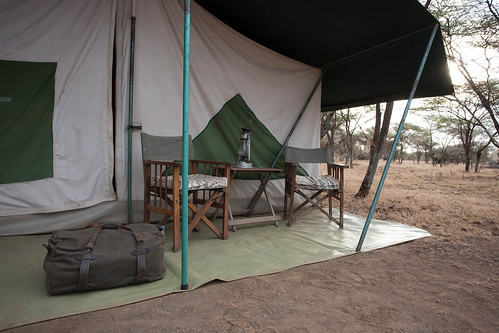by Carla King (carlaking.com)
After my second dual-sport ride my poor little Tour Master street boots were trashed. My friend's motocross boots fit okay, but they were too heavy and noisy to walk in. It was clearly time to go shopping. Looking through the crop of serious four-season, full-height, dual-sport adventure-touring boots, I decided that boots with the features I was looking for ranged from $350 to $550 in price. After a couple of months grilling the adventure riding community about their choices, I decided on the TCX Infinity GTX (Gortex) adventure touring boots, formerly branded Oxtar. This is a review of the TCX Infinitys and it's followed by a review of my shopping experience that includes descriptions of competing boots with reasons for eliminating them from my list.
![]()
Above is a series of photos of my first try-on of the boots. (Click to enlarge.) They were easy to put on, the buckles are very adjustable, and I like the elastic collar at the top. I also like the understated look of them. I'm wearing my Olympia Moto Sports Mesh Tech jacket and pants. The pants unzip all the way to the hip making it very easy to put on and take off your boots.
The Contenders
- TCX Infinity GTX Boots $359, X-Desert $399
- Aerostich Combat Touring Boots $367
- Gaerne Balance Oiled Boots $395
- Forma Adventure Boots $299, Boulder $279, Cape Horn $299
- SIDI Discovery Rain Boots $350, Adventure Rain $400, Adventure Gore-Tex $550
- Alpinestars Toucan Boots $449
- Dainese Carroarmato Gore-Tex Boots $369
Standard on most of these boots are ski boot-type buckle closures, sturdy heel and toe cockpits, and reinforced material that protects the ankles. They're all tall boots, and most have additional padding along the front that protects you from the commonly experienced shin-to-footpeg bashing syndrome. Features I was looking for specifically included:
- A tall boot with shin protection
- Sturdy heel and toe compartments
- Stiff ankle area (little side-to-side bending allowed!)
- Solid protection for the malleolus (ankle bones) on each side of the foot
- Waterproof breathable Gore-tex or similar material
- A padded elastic collar around the top to keep out rocks and dirt and water
- Maximum flexibility for walking
- Sticky sole for street, dirt and mud
- Footbed strong enough to stand comfortably on the pegs
- Understated look, no logos
- Ease in putting them on and taking them off
Picture This
I collected the boots into lookalike groups (see photo below, click to enlarge) because I think most of us have an idea of the "look" we want. Simple or complex, sleek or clunky, old school or hi-tech, black or brown, understated or colorful. I hope that the review of the boots I chose in combination with my shopping experience and this pictorial comparison of boots with prices will help you choose the right pair. I'd love to hear your thoughts, your concerns, frustrations, compromises, and your experience with boots of your past, present, and future. Did I leave your favorite boots out? Do you agree or disagree with my impressions? I know this is a hot topic, so I look forward to hearing from you in the comments area at the end of this article or via the contact form on my website, or join the discussion on my Facebook page. ![]()
![TCX Infinity GTX Touring dual-sport adventure motorcycle boots]()
TCX Infinity GTX Boot
The TCX Infinity GTX is classified by the company as a "touring adventure" model. It fit my requirements for a dual-sport adventure touring boot crafted from waterproof yet breathable material with an elastic collar at the top to keep out water and debris, a quick and very adjustable buckle and velcro closure combination, a sturdy sole that would not slip on rocks, street, or mud, a flexible heel, and enough comfort to take a short hike. I also liked their understated look in comparison to the clunkier (and more protective) models I looked at. TCX Infinity customers consistently report 100% satisfaction with their boots, without the "buts" or "if justs" that riders wearing other brands often mention. To further recommend the TCX, many told me that they are loyal second- and third-time buyers who purchased the Infinity after many years of dual-sport riding in their Oxtars. (Oxtar was rebranded TCX after the acquisition of the company by Novation S.p.A. based in Montebelluna, Italy.)
SIZING
![Carla King Carson Valley Tahoe Adventure Motorcycle Rendezvous]()
Let me first state that I can wear men's sizes because I have a wider foot than the average woman. Luckily for me, most boots start at at European size 40, a woman's size 9. The TCX starts in size 38. However, most stores stock size 42 and up, but can order them from the factory. Plan ahead, because this can take six weeks or more. My size 40 with a cushy sole insert fits great. I put them on and forgot about them, and that's the best recommendation I can give for any piece of gear. As I mentioned in my review of the Schuberth C3 modular helmet, the best gear both protects you from a possible mishap and provides enough comfort to forget about it and enjoy the ride.
WOMEN'S SIZING
Women who wear smaller than size 38 and women with narrow feet will not be able to wear the TCX Infinity or any of the boots mentioned in this review. The boots I shopped for were designed for men, which means they are constructed for wider feet in larger sizes. (I never appreciated my feet so much until now!) The pickings for women in the dual-sport and adventure category are slim. All I could find were SIDI's Vertigo Lei and Fusion Lei, which are, of course, compromises. As a side note, I hope that the industry catches on to the numbers of women who want boots in this category. The number of women who attend adventure motorcycle events like Overland Expo, Horizons Unlimited, and the Carson Valley / Tahoe Adventure Rendezvous is approaching fifty percent and we're all wearing boots designed for men's feet.
SAFETY FEATURES
The TCX Infinity had all the features I wanted: Reinforced heel and toe cockpits, stiff ankle area with malleolus protection on both sides, sturdy footbed and sticky sole, shin protection, reinforced toe and heel cockpits, rubberized shift guard, two cam-lock buckles, thermal heat-resistant suede on the inside of the shin, a velcro closure, and a Gore-tex fly or gaiter.
FOOTBED AND SOLE
![TCX Comfort Fit System for Dual Sport Adventure Motorcycle Boots]()
All TCX boots are made with an anatomic, replaceable footbed that is manually fitted around a foot-shaped mold. There is no break-in period, and the boot flexes easily at the front and back of the heel. This means walking is comfortable, though the footbed is stiff enough that you wouldn't want to trek more than about a mile without a break. It's stiff enough to stand on the footpegs for hours but, unlike many of the stiffer MX boots, you can still feel the pegs under your feet. The sole is patterned in a sticky black tire-tread pattern that channels water out to the edges so you don't slip in water and mud.
COMFORT
The boot feels custom-fitted with its combination of adjustable cam-lock buckles, the wide velcro closure, and the padded elastic collar. It fits snugly with your pants in or out of the boot, or even with a motocross knee and shin guard tucked inside. A couple of inches of Gore-tex on the inside at the top of the boot keeps the foot cool and dry. In the past few months I've ridden in both very hot and very cold conditions, through water crossings and across desert sands, and on miles and miles of tarmac, with no discomfort at all.
RIDING IN THE TCX INFINITY
I throughly tested the safety features of the Infinitys at the Carson Vally / Tahoe Adventure Motorcycle Rendezvous in August. The first ride was a challenging day along the boulder fields and shale trails far into the hills and valleys. I opted for the "medium-level" off-road instead of "beginner," but it turned out to be a rather advanced run. Still, I made it, after bouncing off a few times (at slow speeds). This amused most, but irritated a few, of my fellow riders. And they were all fellows, making it all the more embarrassing for the sole woman in the group, even after one rider was trucked out after a collarbone-breaking fall 18 miles into the hills. Because someone else rode my bike down a particularly steep descent, I can also attest to their comfort while picking your way down a rocky trail. ![Carla King at the Carson Valley / Tahoe Adventure Motorcycle Rendezvous - Too Technical for Me!]()
Yeah, yeah, I see the boulder. Now where's my bike?
REPLACING MY STREET BOOTS?
Since then I have instinctively chosen the TCX Infinitys over my comfy but battered old Tour Master street boots, even for all-tarmac rides. It's pretty clear to me now that I will never go back to street boots. Today's touring boots have so much protection embedded into a not unstylish product that I don't find it necessary to choose. In comparison, the street boots, though they're safety conscious in their class, seem much too short and flimsy. Perhaps if I had chosen one of the more clunky models made with a lot of TPU (Thermoplastic polyurethane) like the SIDI Rains ($350-$400), Alpinestars Toucan ($449), or TCX's X-Desert ($399) I wouldn't be as willing to wear them for a spin on my Guzzi cruiser. But I think the Infinitys are good looking enough to pass for cruiser wear.
![Carla King, TCX Infinity Adventure Boots, Moto Guzzi 1100 Stone Cruiser]()
I choose the TCX Infinity boots over my street boots when I cruise on my Guzzi.
![TCX Urban Trend / X-Rap Waterproof]()
OTHER OPTIONS FROM TCX
If you're the kind of rider with multiple bikes and multiple sets of gear, you're going to love looking through the stylish selections that TCX offers. The brand provides a full range of foot protection for all kinds of riders including categories for custom bikes, street, touring, enduro, motocross, and ATV. I especially like their high-top sneaker style boot. Check them out. They have a great reputation for comfort, safety, and style. ![TCX X-Desert Gortex motorcycle adventure touring dual-sport boot]()
I also glanced briefly at the TCX Touring Adventure / X-Desert Gore-text ($450) with lots of plastic hard parts, but they were too clunky for my taste. Riders attracted to the Alpinestars Toucan or the SIDI Adventure series should take a look, though. If you're on a budget, consider TCX's Track EVO Waterproof boots. They have all the safety features, are lightweight, and the $239 price point is rather surprising. They're waterproof but without breathable Gore-tex those prone to swamp foot will need to pass.
THE SHOPPING JOURNEY
Because shopping for gear is such a journey, I'd like to share it with you, explaining why I eliminated the contenders from my list before I decided on the TCX Infinity. ![Aerostich Combat dual-sport adventure motorcycle boots]()
AEROSTICH COMBAT TOURING BOOTS
I'm going to start with the Combat Touring boots ($367) made by SIDI for Aerostich, which are a very popular boot with the adventure riding crowd. People love their Combats but there are several reasons I ruled them out. First, though they're padded, they are the only model that does not have a reinforced shin guard on the front of the boot, and I seem to hit my shins on the pegs a lot when I'm riding off-road. So the Combat seemed to me to target the dual-sport rider who rides the occasional fire road, unlike most of the others in this quality/price point, which offer true off-road protection in the single-track class. Another factor that determined that this boot was not for me had to do with the fact that it's made entirely of untreated leather. It's incredibly heavy, stiff, and difficult to walk in until a very long and painful (according to many reviewers) break-in period. I think there are two camps when it comes to boots: high-tech and old style. I love sloshing through puddles and mud and being able to just hose them down and forget them between rides. I'm not crazy about the constant maintenance involved in keeping leather soft and waterproof. The Combat is fastened by a single buckle at the ankle which, in comparison to the other boots, seems unusually stingy for a boot in this class. Many reviewers report that the dual velcro fasteners wear out, too. I wonder why they don't add a second buckle, like most everyone else, with a single velcro fastener at the top? On the Combat, adjustment depends upon a lace-up cord between the outer and the gaiter that looked to me to be fumbly and futzy. Indeed, reviews commonly state that the laces stick to the velcro closure, which eventually frays them into oblivion. But the feature I loved on the Combats was the elastic collar at the top. Brilliant! When I saw it I remembered how, on a recent ride through a deep water crossing, water literally poured into the boots I was wearing. I imagined that this elastic collar would solve that problem, along with deterring the large quantities of pebbles and sand I was constantly dislodging from my borrowed MX boots. In the end, two factors killed the Combats for me: Lack of safety features, and the leather material. Leather's lack of immediate-gratification flexibility requiring a long break-in period and constant maintenance. Not to mention the lack of a breathable Gore-tex lining. The Combat is a 100% old-school boot. Enjoy, luddites! ![Gaerne Balance Oiled adventure motorcycle dual-sport boot]()
GAERNE BALANCE OILED
When I put the word out on Facebook that I was shopping for adventure touring boots, I received more recommendation for Gaernes than any other brand. I'd already ruled them out for many of the same reasons I ruled out Aerostich's Combats, but wow, do they ever have a wildly dedicated fan base. The consensus is that the break-in period is almost non-existant, they're lighter, extremely comfortable, and they're brown, not black. I wouldn't mention this except that so many men point out the rugged mountain-man look of them. "The kind of boot Steve McQueen would wear," was one review. This glimpse into male vanity gave me a little laugh, but I understood. They do have a "rock-star adventure rider" vibe about them, and I'll bet they look great with one of those workmen's kilts. Gaerne's Balance Oiled boots ($369) are pre-oiled and fully waterproof right out of the box. They claim that oil-tanned leather is more breathable than the PU (polyurethane) coated leather that "modern" boots use, and the "Aquatech" membrane inside keeps your feet totally dry. Originally created for trial riders (hence the name "Balance"), this model has hard inserts in the heel and toe but no reinforcement in the ankle. This means they are a bit too bendy for someone in the habit of putting herself at risk of frequent dual-sport get-offs. However, the leather is much thicker than street-boot leather and, in combination with the interior padding, gives you a fair amount of cushion. Like most of the modern, high-tech boots I looked at, the Balance Oiled do have three buckles and a shin guard. Resellers tout it as the most comfortable boot they've ever worn, claiming a five-mile hike is not a problem. Gaerne also uses a modified MX boot midsole that's reportedly stiff enough to protect against folding when striking a hard object, but flexible enough to feel your footpegs. I must admit that the combination of old and new school features tempted me, even in spite of my logo-itis -- they put a big white G across the front. What to do? Probably just have a go at it with my fat black Sharpie. Sizes start at an American 8, but smaller sizes are available by special order for about $40 more. A budget version of this boot is the Gaerne Pro-Tech ($284) which is not waterproof. ![Forma Adventure dual-sport adventure motorcycle boots]()
FORMA ADVENTURE
Such are the consequences of timing that if Forma had been on my radar when I was shopping for boots, this review may have featured their Forma Adventure boot ($299), with the TCX Infinity description placed about here. Forma is very popular in Europe and Australia but virtually unknown in the USA because they didn't have a US distributor until recently. Like the Gaerne, the Forma Adventure is made from beautiful pre-oiled leather and it comes in brown or black. Plus, it has all the hi-tech features of the TCX and others in this roundup: adjustable buckles, a shin plate, and sturdy heel and toe compartments. It's a beautiful combination of old school and new tech and I definitely want to try it on. The Drytex liner in Forma boots is, like Gore-tex, completely waterproof and breathable. It has great ankle support with molded inserts on the inner and outer ankle. So it's rigid and supportive, but built for comfort. In fact, it's more flexible at the toe than other adventure boots, and fans say it feels much more like a hiking boot. This really attracts me because I, like a lot of adventure touring folks, like to spend a significant time off the bike to explore, whether it's a short hike in a state park or a trek through a new town. Retailers stock sizes starting at 42 but you can special order sizes 38-41. And for you Steve McQueen types, yep, it also comes in brown. The only down side for me is that the Formas, like the Gaernes, Alpinestars and one of the SIDI models, suffers from logo-itis. Honestly, I'd pay more for a version without logos. For $20 less you might consider the Forma Boulder ($279), which does not have waterproof, breathable lining, but the untreated breathable nubuck suede leather is naturally breathable. If you like the look of the TCX Infinity but it's too expensive for your budget, take a look at Forma's Cape Horn ($299) touring boot, which looks a lot like it, though it lacks the elastic collar and the same level of heel and toe reinforcements. ![SIDI Adventure Gore-tex dual-sport adventure motorcycle boots]()
SIDI RAINS
I have a few friends who have invested in SIDI Adventure Gore-tex ($550) and swear that everyone else should wear them, too, even though they complain loudly about the squeak. In fact there's an entire thread on "The SIDI Adventure Squeak" in ADVRider, with wearers recommending solutions from furniture polish to baby powder. The SIDI squeak is background music at any adventure motorcycle event, no apologies required. But with all the complaints on this defect I can't imagine why SIDI hasn't solved the problem, especially as their boots are among the most expensive in the bunch. If they don't do something about it soon, I predict that all the other manufacturers will start to brag about their anti-squeak technology. The feature set of the more expensive two versions of this boot - the Adventure Gortex and the Adventure Rain - seemed too over the top for me, too "MX" for the kind of riding I'd be doing. Very reinforced. Lots of plastic. Clomp clomp. But unlike the SIDI Adventure Gortex ($550) or the Adventure Rains ($400), the Discovery Rain ($350) has the coveted elastic collar around the top, which made me look twice. (By the way, the SIDI website no longer lists the Adventure Rains, so they may have discontinued the model. However, many of the superstores still carry them.) ![SIDI Armada Gore-tex convertible street and dual-sport adventure motorcycle boot]() I was tempted, but in the end did not choose the Discovery Rain because of 1) the SIDI squeak and 2) logo-itis. I simply do not like wearing corporate logos. Logos on the more expensive Adventure Gore-tex and Adventure Rains are more subdued. The Discovery Rains have large white letters emblazoned across the front of the boot. To further complicate the shopping experience I discovered SIDI's Armada Gortex ($400), a beefy and good looking waterproof "convertible" boot in black leather with Gore-tex lining. The outer dual-sport sleeve provides ankle and shin protection and, once removed, reveals a fully-finished, good-looking cruising boot.
I was tempted, but in the end did not choose the Discovery Rain because of 1) the SIDI squeak and 2) logo-itis. I simply do not like wearing corporate logos. Logos on the more expensive Adventure Gore-tex and Adventure Rains are more subdued. The Discovery Rains have large white letters emblazoned across the front of the boot. To further complicate the shopping experience I discovered SIDI's Armada Gortex ($400), a beefy and good looking waterproof "convertible" boot in black leather with Gore-tex lining. The outer dual-sport sleeve provides ankle and shin protection and, once removed, reveals a fully-finished, good-looking cruising boot.
![Alpinestars Toucan GTX boots]()
ALPINESTARS TOUCAN GTX
The Alpinestars Toucan ($449) is well-respected for their MX line. The Toucan is rich with safety features and it's also an extremely light weight boot at 2.12 lbs. You'd think that a boot of this weight would have greater flexibility but actually they're quite stiff, and they also lack the elastic collar around the top edge. Like the SIDIs, they were somewhat clunkier than I could live with. If you like this boot but can't afford the $449 price tag, take a look at their Scout model at $249. Also take note, the Alpinestars don't squeak. ![Dainese Carroarmato Gore-tex dual-sport adventure motorcycle boots]()
DAINESE CARROARMATOA GORE-TEX
I don't know anyone who wears the Dainese Carroarmato Gore-Tex boots ($369) but they're gorgeous and very comfortable. I might have considered them except that I was by now committed to the idea of that elastic collar around the top of the boot. I would certainly recommend taking a look if you're more street touring oriented than dirt. These boots are so good looking that you could wear them with normal clothing, and they also come in white with turquoise buckles. Now that's Italian!
A SEEMINGLY UNLIMITED SELEC
The range of dual-sport or adventure boots is staggering, and this selection is as far as I got without getting completely overwhelmed. I know people who wear BMW's dual-sport boots and they probably belong in this lineup, too, but they don't advertise online and I didn't get to the dealer. If you bought a BMW from a dealership, you may well have them, along with a lot of other branded BMW gear. What other boots did I leave out? Offerings from Europe - Wulfsports, for example, which a few of my British friends love. What boots do you love that I left out? I'd love to hear about them in the comments section at the end of this post. I'll also continue the discussion on my Facebook page.
Recommendations
The overlap in touring, dual-sport, adventure touring, trials, and motocross is as varied as there are companies who provide them. Most of the trials boots I looked at online seem to have more protection than the Aerostich Combat boots, which are marketed as adventure touring boots. Your decision will vary according to the type of riding you do, size, weight, style, and price. I think the final decision comes down to these three factors:
- Safety - What features can't you live without? Mine included shin guards, heel and toe reinforcements, and ankle protection.
- Riding style - I ride mostly street and dirt roads, with enough technical trail riding to warrant seriously protective gear. And I aspire to ride more dirt. But if you ride mostly street with the occasional fire road you'll need less protection than someone who rides to search for good single track.
- Price - Adventure touring boots are expensive, but even if you need to watch your budget you don't need to sacrifice safety. There are plenty of options in the less expensive trials and MX boot categories to choose from. And don't forget Craigslist, eBay, and check out the selection of used gear in my friend Jessica's Yellow Devil Gear shop in Los Angeles. She ships!
Final Thoughts
Despite lusting a bit over the Forma Adventures and the SIDI Armadas, I don't regret choosing TCX Infinity. They've already proven themselves on long tarmac rides and single-track challenges. They've protected me from a fall in a boulder field, from a slide on shale, from water crossings and desert sands. I have forgotten that I'm wearing them for very long periods of time. Cleaning them requires a quick swipe with a sponge and the occasional touchup with black shoe polish. And they're understated enough that I can get away with wearing them off the bike with tights and a skirt. In adventure motorcycle touring, less is more, so if I wear these and pack my flip-flops, well then, it looks like I'm ready for Baja.
Join the Discussion
What boots do you wear for adventure touring? Join the discussion.


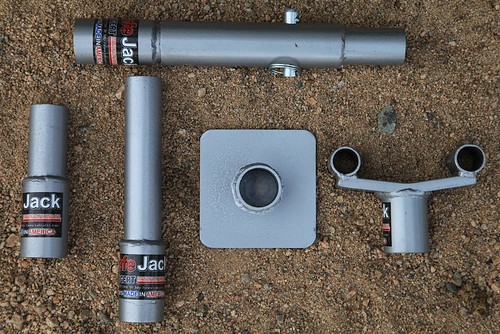
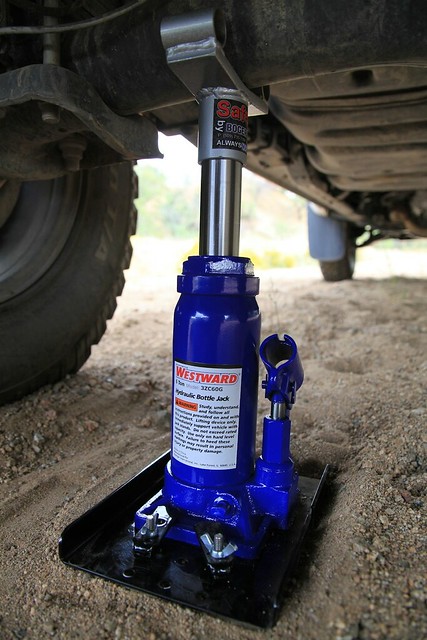
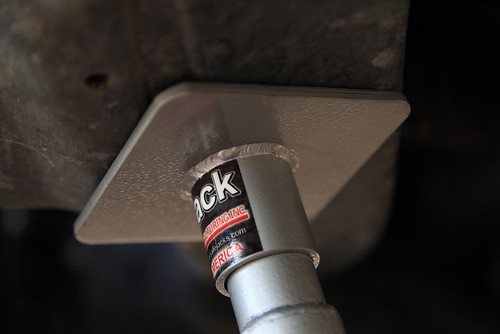
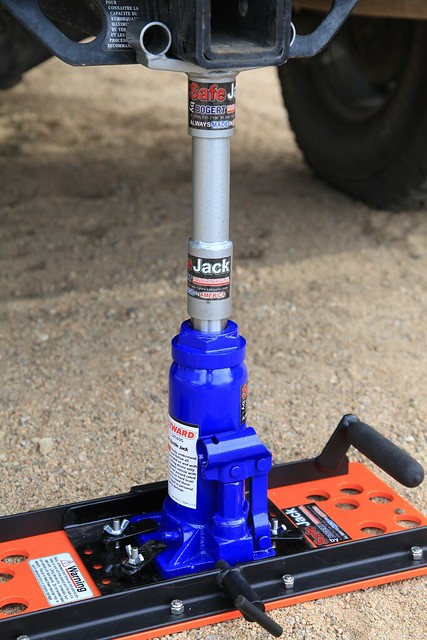
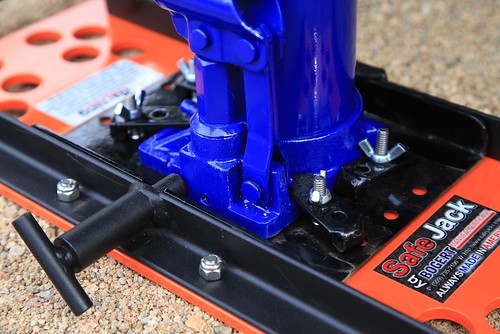



























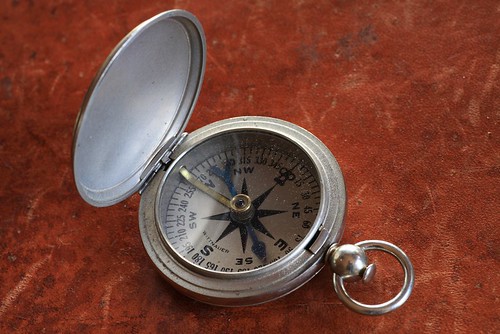








 When it's 20 degrees Fahrenheit outside and the only adventure you can think of involves a warm drink in an armchair by the fire, it's
When it's 20 degrees Fahrenheit outside and the only adventure you can think of involves a warm drink in an armchair by the fire, it's 
 ADVENTURE MOTORCYCLE MAGAZINE
ADVENTURE MOTORCYCLE MAGAZINE 
 HYBRIDLIGHT 150C, $50.
HYBRIDLIGHT 150C, $50.  TEMBO TUSK EXTREME DUTY LANTERN HANGER, $95.
TEMBO TUSK EXTREME DUTY LANTERN HANGER, $95. 


 FORCE K9 TACTICAL VEST, $150
FORCE K9 TACTICAL VEST, $150












